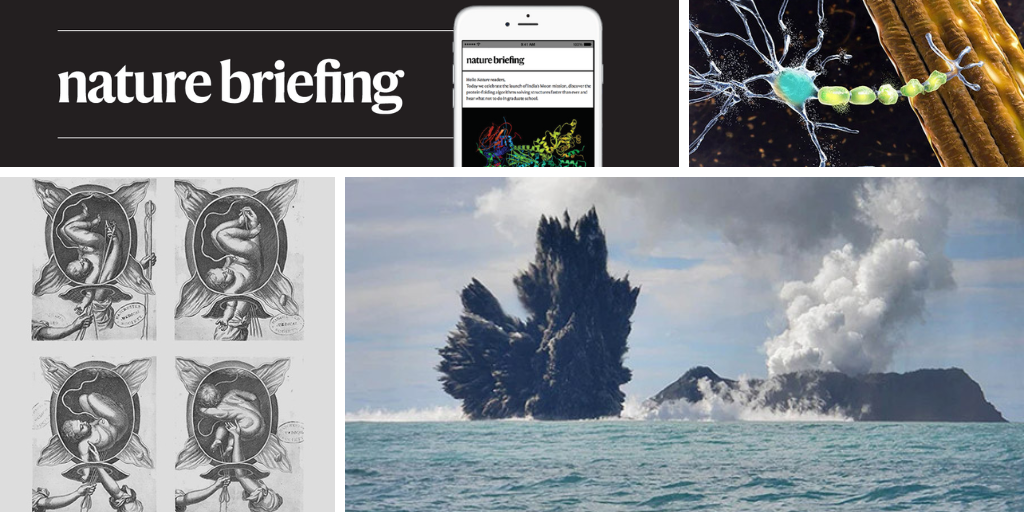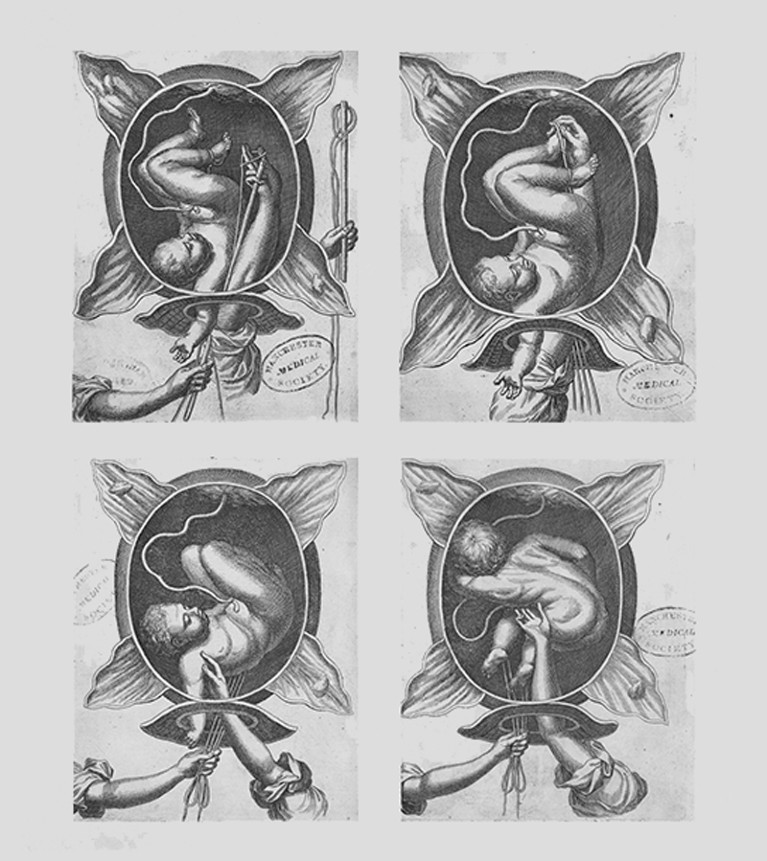Hello Nature readers, would you like to get this Briefing in your inbox free every day? Sign up here.
This eruption of the Hunga Tonga–Hunga Haʻapai volcano was captured in 2009. When it erupted again, in early 2022, it triggered a ‘mega-tsunami’. (Dana Stephenson/Getty Images)
Shockwaves from the Hunga Tonga–Hunga Haʻapai volcano that erupted on 15 January 2022 produced waves up to 45 metres high in Tonga, and higher-than-usual waves as far away as the Caribbean. It also gave researchers a unique opportunity to study tsunamis caused by volcanoes, which are difficult to monitor because they move faster than those caused by earthquakes or landslides. A digital simulation of three key blasts from the Tongan volcano reveals how shallow reefs, which usually protect the island from waves, made the tsunami worse for Tonga’s coastlines.
Reference: Science Advances paper
Brazil will build the world’s largest mosquito factory in hopes of protecting up to 70 million people from mosquito-borne viruses, such as dengue. Over the next ten years, the facility will produce and release up to five billion mosquitoes per year that carry a bacterium that stops them from transmitting viruses. Trials in Indonesia and elsewhere have shown that the method could reduce the incidence of dengue by up to 77%.
An ancient gene that our ancestors snatched from bacteria some 500 million years ago became a key component in all vertebrates’ vision. The gene encodes a protein that shuttles light-reactive molecules between cells and is found in all vertebrates — but not in invertebrates. It most closely resembles a class of bacterial genes that encode protein-recycling proteins. Bacteria are known to swap genes, and vertebrates can also incorporate microbial DNA.
Features & opinion
The US Food and Drug Administration could kick off “a new era” if it chooses to approve a new drug, tofersen, for a rare form of amyotrophic lateral sclerosis (ALS). The drug did not slow the progress of the degenerative condition in a phase III trial. But it did show signs of possible benefit, such as a reduction in a biomarker of neuronal damage and death, called neurofilament light chain (NFL). Because of this, the drug’s maker, Biogen, has asked the FDA to approve the drug on an ‘accelerated’ basis, to fast-track it to patients with a guarantee that future trial data will determine whether it works. If approved, tofersen will become the latest example of the agency’s evolving approach to neurological drug development and supercharge interest in using NFL as a tool to measure to test drugs.
Have you ever tried to search the Internet for CARs — the shorthand term for chimeric antigen receptor T-cell therapy — and ended up with a bunch of links for automobiles? Then you’ve experienced one of the bugbears that plague academic search. “I often think one of the main skills of being a researcher these days is having good Google-fu,” says space scientist Mark McCaughrean: “being able to figure out what to ask Google that minimizes the amount of time you have to spend weeding out crap.” Researchers share their top tips for finding what you’re really looking for, including how to grapple with the weaknesses of large language models, such as ChatGPT.
When the US Coast Guard wanted to identify the person who made a hoax mayday call — a serious crime in the United States — they turned to computer scientist Rita Singh. “If you merge the powerful machine-learning, deep-learning technology that we have today with all of the information that is out there and do it right, you can engineer very powerful systems that can look really deeply into the human voice and derive all kinds of information,” says Singh. After she matched the call to a recording of a suspect’s voice, he pled guilty, so Singh’s assertions were never tested in court. But it’s just one example of how ‘voiceprinting’ — identifying people from their voice alone — is seeing a resurgence after being widely discredited in US courts.
Image of the week
Engravings from a 1690 German medical text by Justine Siegemund.Credit: The University of Manchester
In 1690, acclaimed midwife Justine Siegemund became the first woman to publish a German medical text: The Court Midwife, a beautifully illustrated training manual for delivering babies. “This book, which was long in seeing the light of day, as if in childbirth, will be what I leave to the world, since I have borne no children,” she wrote. Portrayed in detailed embryological engravings by medical illustrators Regnier de Graaf and Govard Bidloo, the “fetuses depicted stand for all those infants saved by Siegemund herself and by all the midwives who learned from her”, writes historian of medicine Rebecca Whiteley in Birth Figures, a scholarly analysis of drawings of fetuses in utero between the sixteenth and eighteenth centuries. (Nature | 5 min read) (The University of Manchester)








More News
Molecular basis for differential Igk versus Igh V(D)J joining mechanisms – Nature
Microbes ‘sieve’ ions on their surface to start the nitrogen cycle
Work hardening in colloidal crystals – Nature